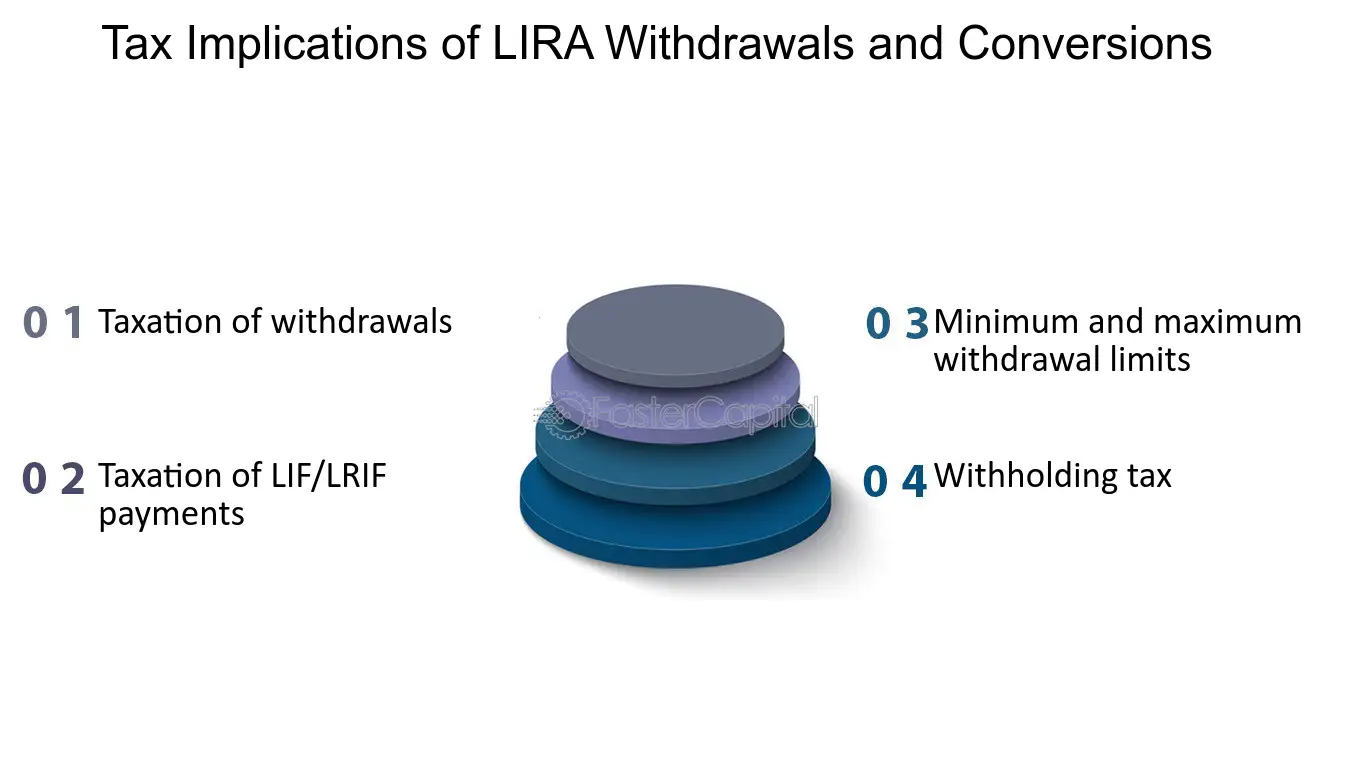What is a Locked-in Retirement Account (LIRA)?

A Locked-in Retirement Account (LIRA) is a type of retirement savings account that is designed to hold funds that have been transferred from a registered pension plan (RPP) or a deferred profit sharing plan (DPSP). The funds in a LIRA are “locked-in,” meaning they cannot be withdrawn as cash until a certain age or under specific circumstances, such as financial hardship or disability.
One of the main purposes of a LIRA is to provide individuals with a way to preserve and grow their retirement savings that have been accumulated through an employer-sponsored pension plan. When an individual leaves their job or retires, they may have the option to transfer the funds from their pension plan into a LIRA.
Features of a Locked-in Retirement Account

A LIRA has several key features that distinguish it from other types of retirement savings accounts:
- Locked-in funds: The funds in a LIRA are legally restricted and cannot be withdrawn as cash until a specific age, typically between 55 and 71, depending on the jurisdiction. This ensures that the funds are preserved for retirement purposes.
- Investment options: Like other retirement savings accounts, a LIRA allows individuals to invest their funds in a variety of investment options, such as stocks, bonds, mutual funds, and exchange-traded funds (ETFs). This allows individuals to potentially grow their retirement savings over time.
- Income options: Once the individual reaches the specified age, they can convert their LIRA into a retirement income option, such as a Life Income Fund (LIF) or a Registered Retirement Income Fund (RRIF). These options provide individuals with a regular stream of income during retirement.
Benefits of a Locked-in Retirement Account

There are several benefits to having a LIRA as part of your retirement savings strategy:
- Preservation of funds: By keeping the funds in a LIRA, individuals are less likely to spend their retirement savings prematurely. The locked-in nature of the account helps ensure that the funds are preserved for their intended purpose.
- Tax advantages: Contributions made to a LIRA are typically tax-deductible, meaning individuals can reduce their taxable income by the amount contributed. However, withdrawals from a LIRA are generally subject to income tax.
- Flexibility: While the funds in a LIRA are locked-in, there are certain circumstances under which individuals may be able to access the funds before the specified age. These circumstances may include financial hardship, disability, or the purchase of a first home.
A Locked-in Retirement Account (LIRA) is a type of retirement savings account that is designed to hold funds from a pension plan or other locked-in retirement savings vehicles. It is a tax-deferred investment account that allows individuals to preserve and grow their retirement savings until they reach a certain age, usually when they retire.
One of the key features of a LIRA is that the funds held in the account are “locked-in,” meaning they cannot be withdrawn or accessed until specific conditions are met. These conditions typically include reaching a certain age or experiencing financial hardship. This ensures that the funds are used for their intended purpose of providing income during retirement.
LIRAs are governed by specific regulations and legislation, which vary by jurisdiction. In Canada, for example, LIRAs are subject to provincial or territorial pension legislation and are often used to hold funds from a registered pension plan when an individual leaves their employer before retirement.
Once funds are transferred into a LIRA, they are typically invested in a variety of financial instruments such as stocks, bonds, mutual funds, and other investment vehicles. The specific investment options available may depend on the financial institution holding the LIRA and the individual’s risk tolerance and investment goals.
While LIRAs offer tax advantages, such as tax-deferred growth and potential tax savings upon withdrawal, they also come with certain restrictions. For example, there are annual contribution limits and rules regarding when and how funds can be withdrawn. It is important for individuals to familiarize themselves with the specific rules and regulations governing LIRAs in their jurisdiction.
In summary, a LIRA is a retirement savings account that holds funds from a pension plan or other locked-in retirement savings vehicles. It offers tax advantages and allows individuals to preserve and grow their retirement savings until they reach a certain age. However, the funds are “locked-in” and cannot be accessed until specific conditions are met. It is important to understand the rules and regulations governing LIRAs in your jurisdiction to make the most of this retirement savings tool.

Emily Bibb simplifies finance through bestselling books and articles, bridging complex concepts for everyday understanding. Engaging audiences via social media, she shares insights for financial success. Active in seminars and philanthropy, Bibb aims to create a more financially informed society, driven by her passion for empowering others.
